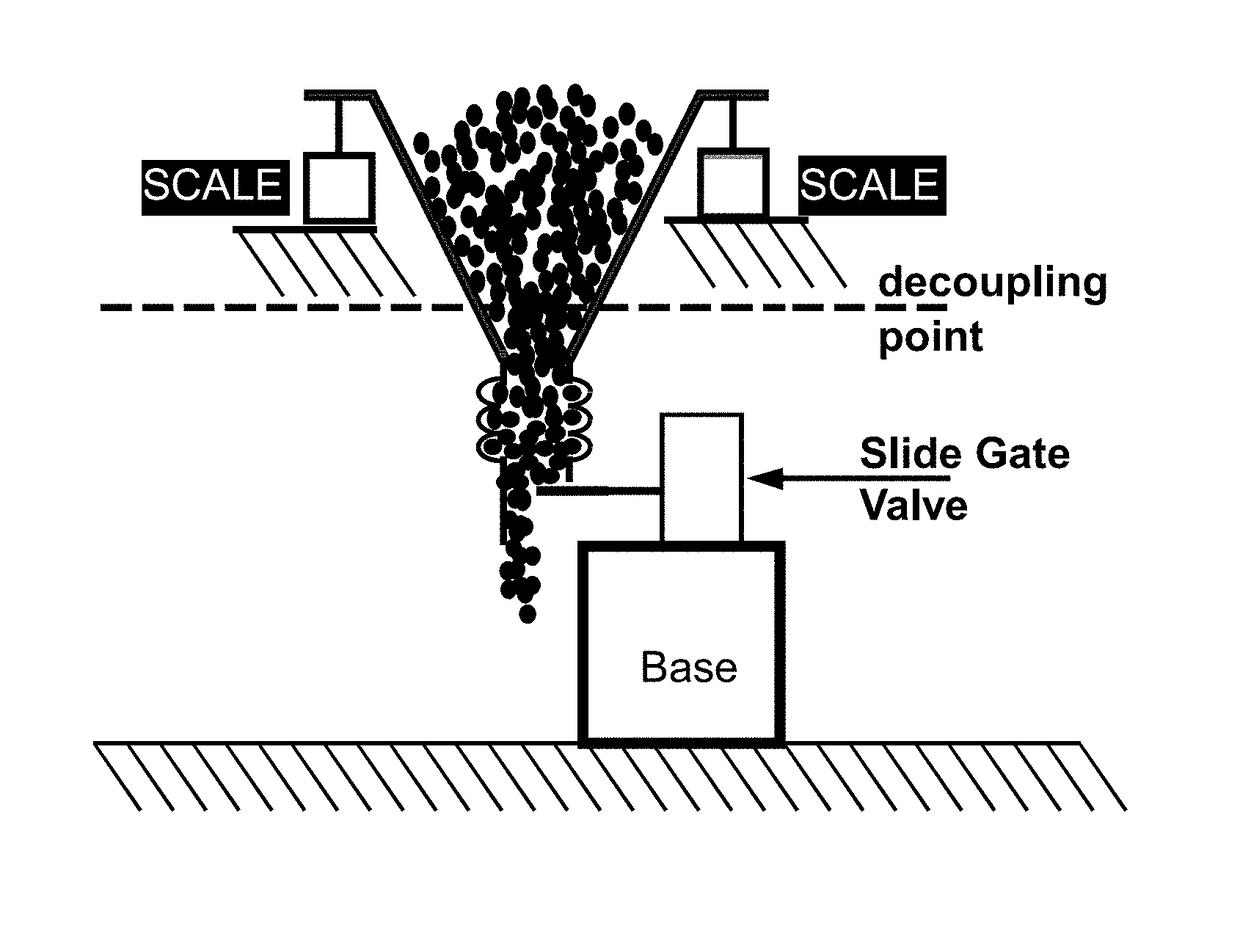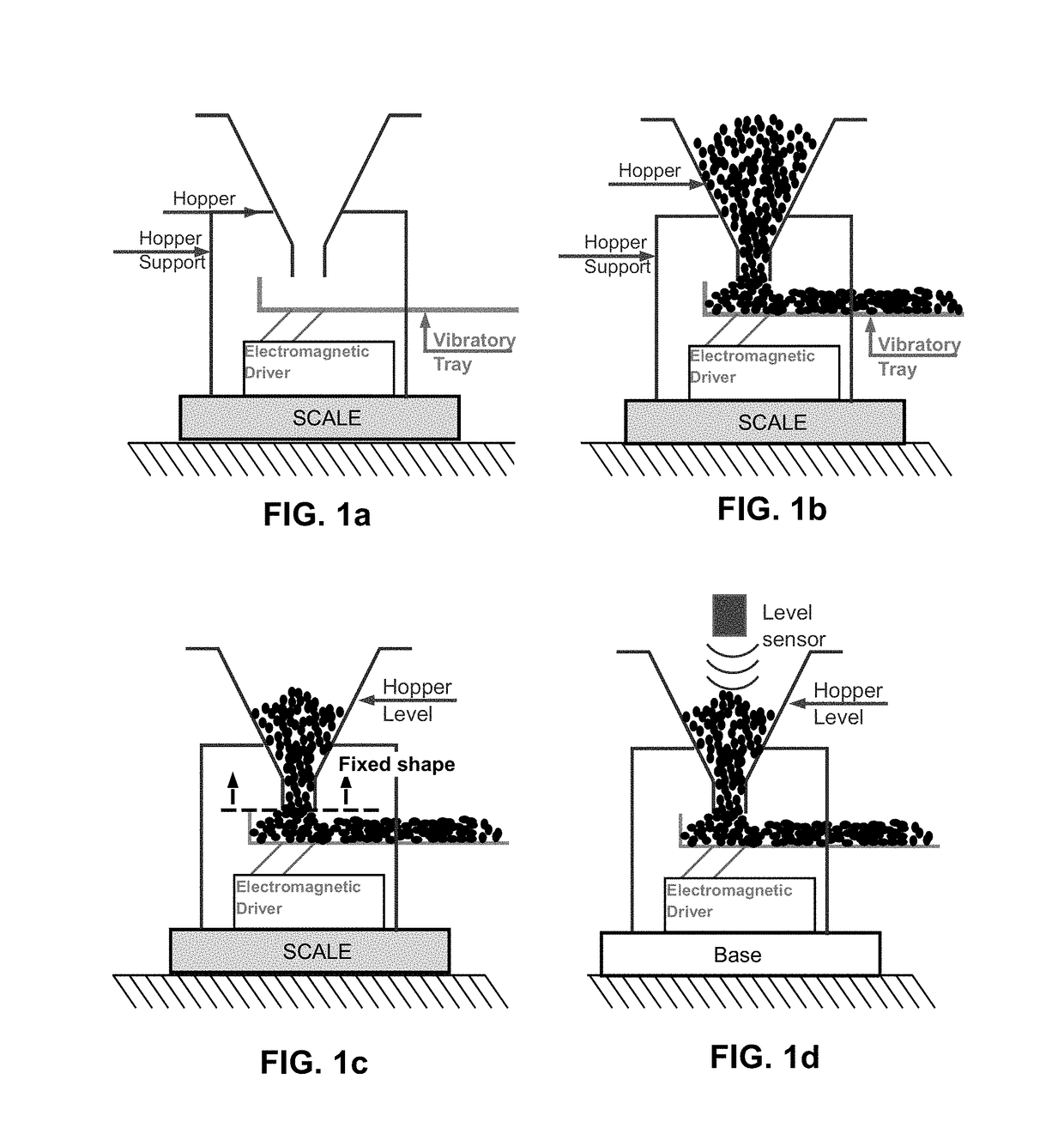Decoupling point weight measurement
a technology of decoupling point and weight measurement, which is applied in the direction of weighing apparatus, weighing apparatus details, instruments, etc., can solve the problems of unreliable methods in the context of certain materials, the weight of the supporting structure is many times the weight of the product, etc., and achieves the effect of improving measurement accuracy and being less expensiv
- Summary
- Abstract
- Description
- Claims
- Application Information
AI Technical Summary
Benefits of technology
Problems solved by technology
Method used
Image
Examples
Embodiment Construction
[0038]While the present invention will be described more fully hereinafter with reference to the accompanying drawings, in which a particular embodiment is shown, it is to be understood at the outset that a person skilled in the art may modify the invention herein described while still achieving the favorable results of this invention. Accordingly, the description which follows is to be understood as a broad teaching disclosure directed to persons of skill in the appropriate arts and not as limiting upon the present invention.
[0039]Referring now to the figures and particularly to FIG. 1a, the prior art method of determining hopper, bin or silo weight is to weigh the entire mechanism, which includes the hopper, the feed mechanism and all supporting structure. The first step is to weigh the mechanism without the product as shown in FIG. 1a. The mechanism with the product is then weighed as shown in FIG. 1b; the difference being the product weight. This method is not without its inhere...
PUM
 Login to View More
Login to View More Abstract
Description
Claims
Application Information
 Login to View More
Login to View More - R&D
- Intellectual Property
- Life Sciences
- Materials
- Tech Scout
- Unparalleled Data Quality
- Higher Quality Content
- 60% Fewer Hallucinations
Browse by: Latest US Patents, China's latest patents, Technical Efficacy Thesaurus, Application Domain, Technology Topic, Popular Technical Reports.
© 2025 PatSnap. All rights reserved.Legal|Privacy policy|Modern Slavery Act Transparency Statement|Sitemap|About US| Contact US: help@patsnap.com



